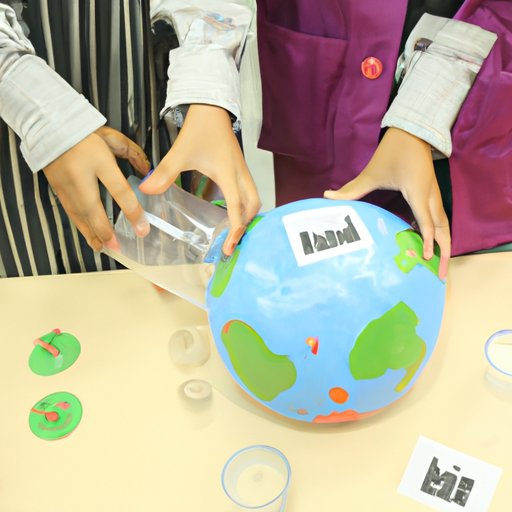Introduction
Teaching science to English as a Second Language (ESL) students can be quite challenging. Not only are the concepts difficult to understand, but also the language barrier can be a major obstacle in the learning process. It is important for teachers to find creative ways to engage their students and make the material easier to comprehend. In this article, we will explore some strategies that can be used to effectively teach science to ESL students.
Utilize visuals such as diagrams and pictures to supplement explanations
Visuals can be extremely helpful when teaching science to ESL students. Diagrams and pictures can provide a much-needed visual aid to supplement verbal explanations. They can also help students better understand abstract scientific concepts. For example, a diagram of a cell structure can provide a visual representation of what it looks like and how the parts work together. Pictures can also be used to demonstrate phenomena such as the water cycle or photosynthesis. By providing visuals in addition to verbal explanations, students will be able to gain a better understanding of the material.
Provide hands-on activities to help students gain a better understanding of the concepts
Hands-on activities are an excellent way to engage ESL students in the learning process. By providing activities that involve physical manipulation of objects, students can gain a better understanding of the scientific concepts being taught. For example, students can use paper cups to create a model of the water cycle. They can fill the cups with water and watch as evaporation occurs, demonstrating how water moves through the cycle. Other activities could include building a model of a plant cell or measuring the speed of a toy car. These activities can help students develop an intuitive understanding of the concepts being taught, which can be particularly useful for those who are struggling with the language barrier.
Break down complex topics into smaller, more manageable chunks
When teaching science to ESL students, it is important to break down complex topics into smaller, more manageable chunks. This will make it easier for students to absorb the information and understand the concepts. Teachers should focus on one topic at a time and provide detailed explanations. They should also utilize visuals, such as diagrams and pictures, to supplement their explanations. Additionally, teachers should allow for plenty of practice time so that students can become comfortable with the material. By breaking down topics into smaller chunks, teachers can ensure that their students are able to understand the material and apply it to their everyday lives.
Incorporate real-world applications to make learning science relevant
Incorporating real-world applications can be a great way to make learning science more relevant to ESL students. By connecting the concepts they are learning to everyday life, students can gain a better understanding of why these topics are important. For example, teachers can discuss how photosynthesis is essential for plants to grow and provide food for humans. They can also discuss how electricity works and how it is used in our homes. By providing real-world applications, students will be able to see the relevance of the material and better understand the topics being taught.
Use role-play scenarios to help students practice their language skills
Role-play scenarios can be a great way to help ESL students practice their language skills. Students can be assigned roles and tasked with acting out a scenario related to the scientific concepts they are learning. For example, students can be given the roles of scientists and tasked with discussing a new discovery they have made. This activity will not only help them understand the scientific concepts, but also give them an opportunity to practice their language skills in a safe and supportive environment.
Conclusion
Teaching science to ESL students can be quite challenging, but there are several strategies that can be used to make the process easier and more effective. Utilizing visuals, providing hands-on activities, breaking down complex topics, incorporating real-world applications, and using role-play scenarios can all help make the learning process easier and more enjoyable for both the teacher and the student. By incorporating these strategies into their lesson plans, teachers can ensure that their students are able to gain a better understanding of the material.
(Note: Is this article not meeting your expectations? Do you have knowledge or insights to share? Unlock new opportunities and expand your reach by joining our authors team. Click Registration to join us and share your expertise with our readers.)
